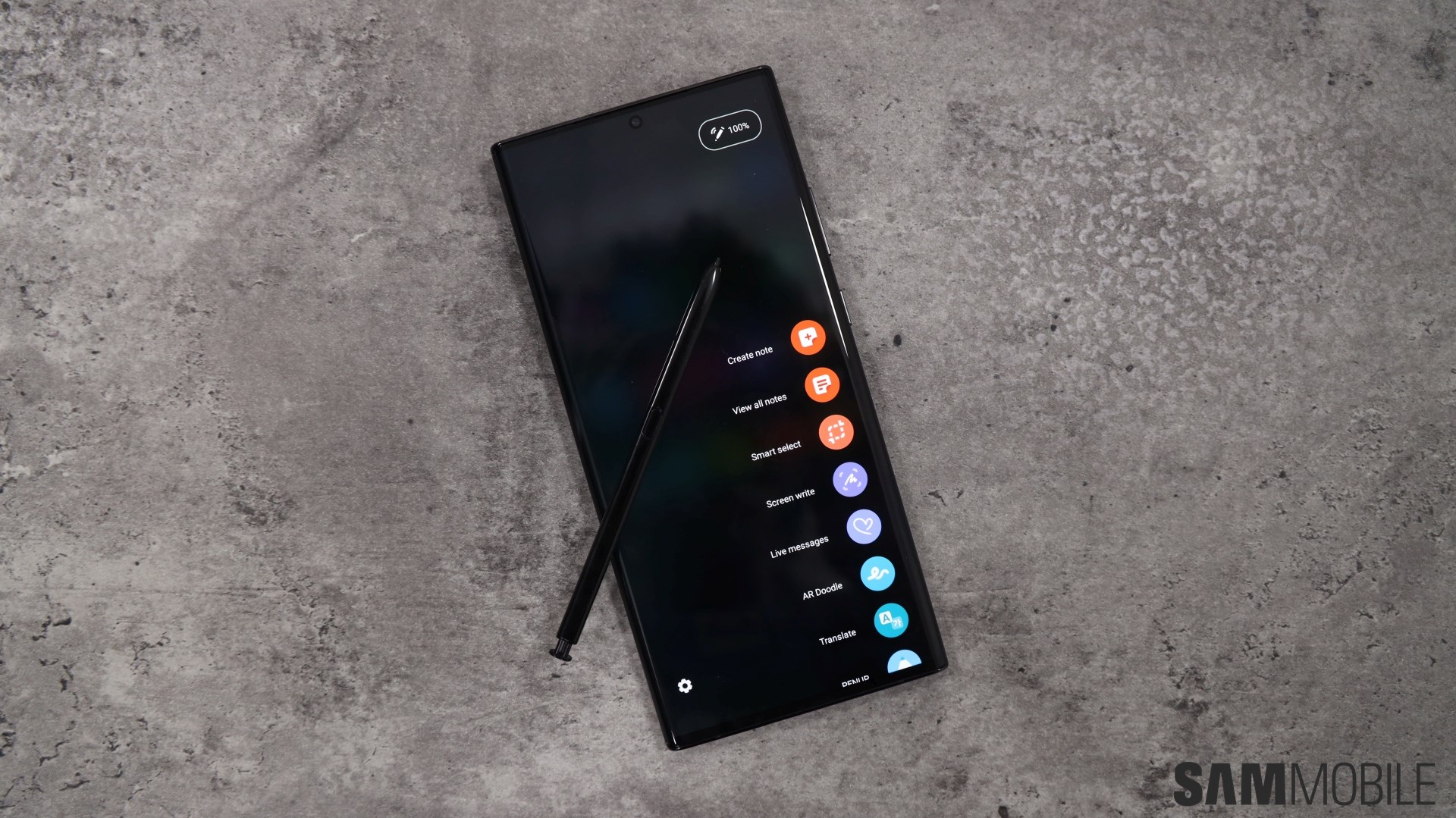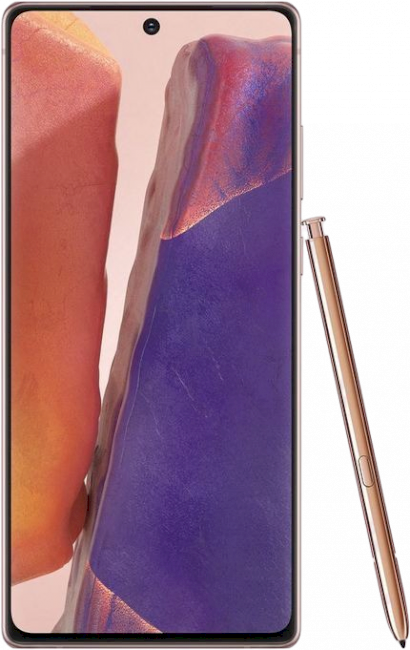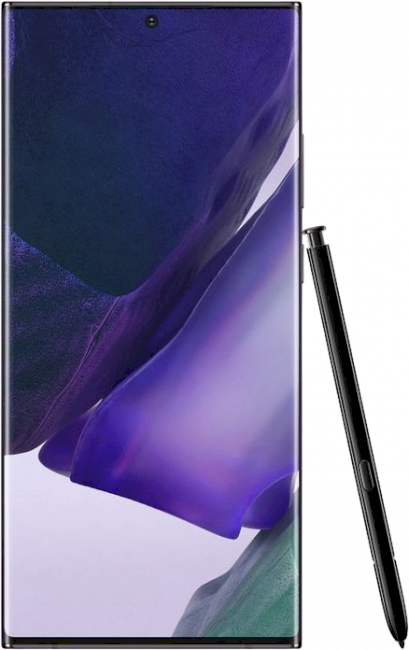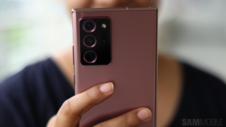The base Galaxy Note 20 model might give you a few good reasons to consider upgrading from the Galaxy Note 9, but if you’re thinking of fully committing to this new purchase and buying the best-possible S Pen flagship variant unveiled at Galaxy Unpacked 2020, look no further than the Galaxy Note 20 Ultra.
The Galaxy Note 20 Ultra is basically the Galaxy Note 20 with extra features and a bigger footprint, as well as a higher price tag. If you own the 2018 S Pen flagship and you’re wondering what you’d be gaining or losing by switching to the new flagship, you can refer to our new online comparison tool for a quick look, or you can keep reading.
Galaxy Note 9 versus Galaxy Note 20 Ultra: Display
It’s evident that the Galaxy Note 20 Ultra has a larger 6.9-inch display compared to the Galaxy Note 9’s 6.4-inch panel, but the tech disparity between the two models is even more obvious when looking beyond the size of the display.
This is because the Galaxy Note 20 Ultra has an Infinity-O display with a centered cutout, a higher pixel count of 3200 by 1440 (up from 2960 by 1440), and more importantly, the display supports a 120Hz refresh rate where the Galaxy Note 9 is limited to 60Hz.
In addition to the screen being larger, better looking thanks to HDR10+ and the high refresh rate, the Galaxy Note 20 Ultra continues to up the ante with Gorilla Glass 7 protection, while the Galaxy Note 9 uses Gorilla Glass 5.
Galaxy Note 9 versus Galaxy Note 20 Ultra: Cameras
Time will tell whether the Galaxy Note 20 Ultra will manage to compensate for the problematic camera experience delivered by the Galaxy S20 Ultra at launch, but regardless, the Galaxy Note 9 feels quite outdated in comparison – at least on paper, because things might be a bit different in practice.
The 2018 flagship has two rear-facing cameras, both clocking in at 12-megapixels, as well as an 8 MP selfie sensor and a 2MP iris scanner. In contrast, the Galaxy Note 20 Ultra boasts a 108MP main shooter along with a 12MP ultra-wide sensor and a 12MP telephoto lens capable of 50x hybrid zoom. It carries the same 10MP selfie sensor as the Galaxy Note 10/Note 10+.
The new Galaxy Note 20 Ultra also ditches the 3D ToF sensor that was used by the Galaxy Note 10+ and sports a laser autofocus module instead. This may actually be a compromise compared to the older Galaxy Note 9, as the latter model’s Dual Pixel autofocus is technically superior to laser autofocus.
Galaxy Note 9 versus Galaxy Note 20 Ultra: S Pen, memory, other features
Needless to say, the Galaxy Note 20 Ultra carries refreshed internal hardware including a new chipset, so instead of giving you a list containing core counts and frequencies, you can check our aforementioned online comparison tool for a closer look at these details.
Otherwise, it’s worth noting that the Galaxy Note 20 Ultra comes with 12GB of RAM and 256GB of storage and there’s an additional option for 512GB of built-in memory. The LTE-bound Galaxy Note 20 Ultra has 8GB of RAM instead. Both the Galaxy Note 9 and Galaxy Note 20 Ultra have expandable storage.
Other benefits the Galaxy Note 20 Ultra offers include a larger 4,500mAh battery with 45W fast charging, 15W wireless charging, and 9W reverse wireless charging; an under-display fingerprint scanner, and a brand-new S Pen with improved 9ms latency and an internal gyroscope for Air Actions. The S Pen is paired with a fresh version of Samsung Notes that pushes the note-taking concept to a whole new level.
Additionally, the new flagship has Gorilla Glass 7 on the back panel and it ships with Android and One UI 2.5 out-of-the-box. The phone lacks a 3.5mm headphone jack and an iris scanner but the Galaxy Note 9 can’t match its prowess in most other areas.
Will you be upgrading from the Galaxy Note 9 to the Galaxy Note 20 Ultra? If so, what are the main reasons behind your decision? Join us in the comment section below and let us know.
General Information
-
Model Name
Galaxy Note 20 Ultra
Galaxy Note 9
-
Model type
Bar
Bar
-
Colors
Black (Mystic Black)Bronze (Mystic Bronze)White (Mystic White)
Blue (Ocean Blue)Black (Midnight Black)Purple (Lavender Purple)Bronze (Metallic Copper)Silver (Cloud Silver)White (Alpine White)
-
Announced
2020, August
2018, August
-
Released
2020, August
2018, August
Physical specifications
-
Dimensions
Bar: 164.8 x 77.2 x 8.1 mm
Bar: 161.9 x 76.4 x 8.8 mm
-
Weights
208g
201g
-
IP rating
IP68
IP68
Operating system
-
Operating system
Android 11
Android 10
-
One UI version
3.0
2.5
Networks
-
SIM
Dual SIM model (Hybrid SIM slot)
Dual SIM model (Hybrid SIM slot)
-
SIM card sizes
Nano-SIM (4FF)
Nano-SIM (4FF)Nano-SIM (4FF)
-
Networks
2G3G4G
2G3G4G
-
eSIM support
Yes
No
Display
-
Kind
Main Display
-
Name
Infinity-O Display
Infinity Display
-
Technology
Dynamic AMOLED 2X
Super AMOLED Display
-
Size
6.9 inch / 175.26 mm
6.4 inch / 162.56 mm
-
Resolution
WQHD / 3088x1440 pixels
QHD+ / 2960x1440 pixels
-
Pixel density
496 PPI
516 PPI
-
Screen to body ratio
~83.4%

.png?1596632920)
.png?1596632919)
.png?1596632918)
.png?1596632917)
.png?1596632915)
.png?1596632914)

.png?1596632910)
.png?1596632910)
.png?1596632909)
.png?1596632908)
.png?1596632906)
.png?1596632905)
.png?1596632904)

.png?1596632902)








